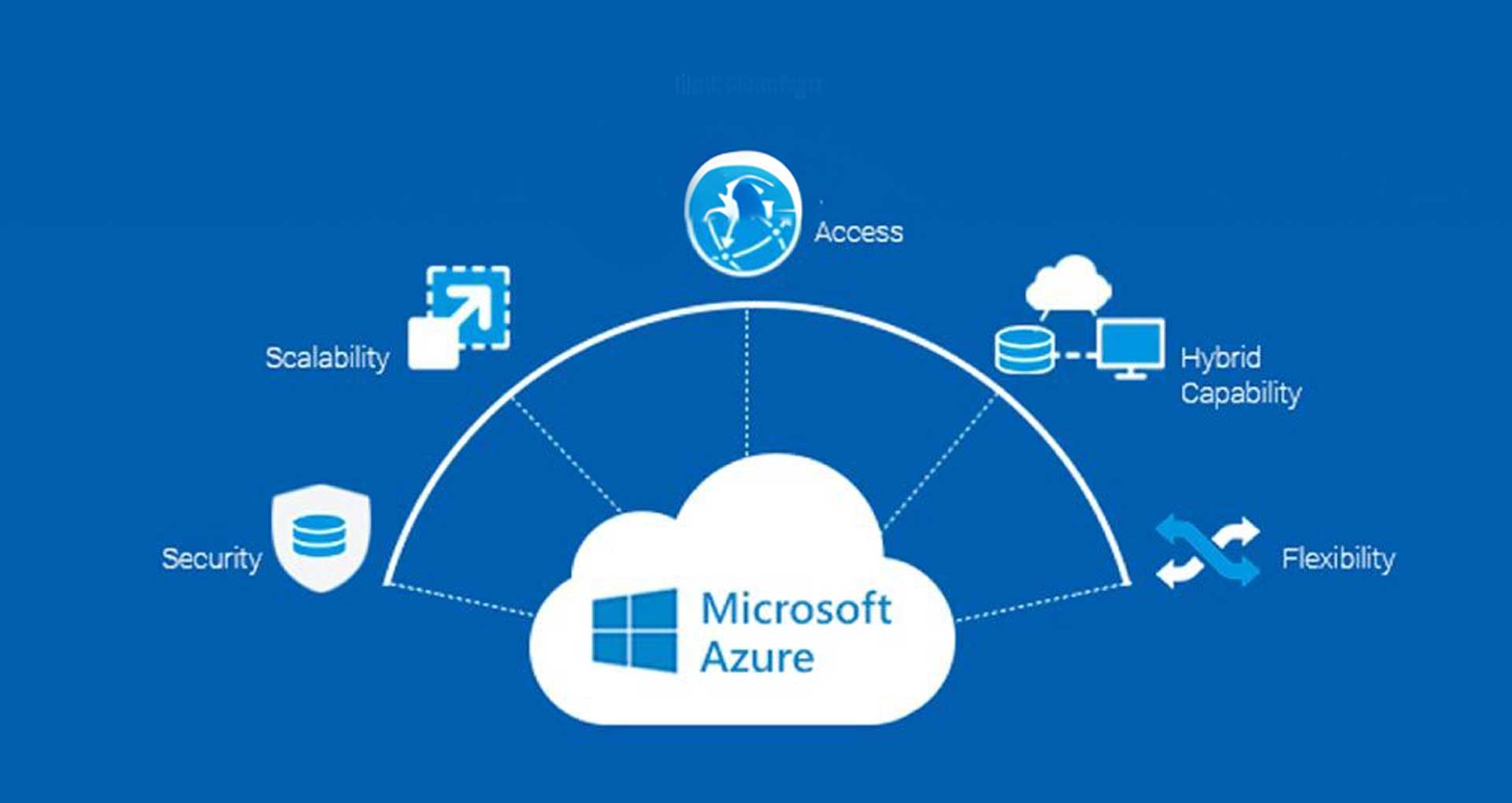SRE vs DevOps are often framed as competing approaches to software delivery. In practice, they’re complementary lenses on the same goal: shipping value safely, repeatedly, and efficiently. Get your model right and you compound gains with fewer incidents, faster delivery, and better margins. Get it wrong and you amplify toil, rework, and churn.
From team design to reliability goals to MSP alignment, the SRE–DevOps distinction guides your operating strategy. In this blog post, we outline the fundamentals of each and provide a simple way to choose what suits your stack and objectives. You’ll get to explore the key difference between SRE and DevOps, their overlaps, the top benefits and trade-offs of each, which problems they solve, plus when a blended approach delivers speed, scalability, efficiency and safety.
What is SRE (Site Reliability Engineering)?
Site Reliability Engineering applies software engineering to operations and infrastructure. The goal is reliable, highly available, and scalable services. SRE teams treat operations as an engineering problem. They use automation and data to cut downtime, handle incidents faster, and protect critical service levels. Google introduced the role in 2003, and many companies with complex systems now use it.
Key Principles of SRE
The list below covers every key principle, each paired with a practical example.
- Balance risk with error budgets
Your app targets 99.9% monthly uptime (~43 minutes of allowed downtime). If a team uses up 35 minutes in week one, SRE slows new launches and focuses on fixes and hardening until the error budget recovers. - SLOs/SLIs/SLAs made practical
Checkout completes in under 2s for 99% of users (SLO). If latency spikes to 4s during a sale (SLI breach), SREs roll back the last change and auto-scale the service to meet the SLO. The external SLA defines credits if targets aren’t met. - Eliminate labor with automation
Nightly on-call gets paged to restart a stuck worker. It happens 3 times a week. SRE writes a small controller that detects the stuck state and automatically restarts it. Pages drop to zero. - Monitoring and observability you can feel
A “red” region’s CPU graphs look fine, but traces show one slow downstream call. SREs add a circuit breaker so the app degrades gracefully (e.g., hides “recommended items”) instead of failing checkout. - Ship more minor, safer changes
Instead of a giant Friday release, SRE enables canary deployments to 1% of traffic. If the error rate rises, the system auto-reverts in minutes, not hours. - Release engineering with guardrails
A pipeline blocks deployment if p95 latency is worse than yesterday’s baseline by 20% in staging. Bad builds never reach production. - Simplicity that wins under stress
A runbook says: “If queue depth > 50k for 5 min: scale workers to N, flush dead-letter, verify SLO.” Clear steps beat clever but complex fixes at 3 a.m.
What is DevOps?
DevOps is a way of working that brings development and operations together. It focuses on collaboration, automation, and continuous practices across the software lifecycle. The aim is faster delivery, better quality, and quicker recovery when things fail. DevOps breaks down silos and promotes shared ownership of outcomes.
Key Principles of DevOps
Key principles are listed below with examples for better understanding.
- Collaboration in practice
Developers, Ops, and QA sit in the same channel. A feature flag plan, metrics, and rollback steps ship with every story. No “throwing code over the wall.” - Automation everywhere
Merge to main kicks off build → unit tests → security scan → integration tests → deploy to staging → smoke tests → auto-promote to prod if green. No manual buttons. - CI/CD as habit
Teams integrate code 5–10 times a day. Small diffs mean faster reviews, fewer merge conflicts, and simpler rollbacks. - Shared responsibility
The team that builds the notification service also owns its alerts, dashboards, and on-call. They see the impact and fix root causes faster. - Rapid feedback loops
A/B test shows the new search UX hurts conversion on mobile. The team rolls back the flag in minutes, studies the session replays, and iterates to optimize. - Measure what matters
The team tracks DORA metrics to quantify delivery performance. Deployment frequency (daily), lead time for changes (hours), change failure rate (below 10%), and mean time to recovery (under 30 minutes). These metrics are reviewed during retrospectives to identify improvement opportunities. - Learn without blame
Post-incident reviews focus on systemic failures rather than individual actions. The question is “what conditions allowed this to occur?” not “who caused this?” Remediation actions might include implementing exponential backoff with jitter for retries, configuring monitoring thresholds and alerts, and creating runbook documentation for common failure modes.
Key Differences Between SRE and DevOps
While SRE and DevOps share common ground, they differ in scope and implementation. DevOps represents a cultural philosophy and set of practices spanning the entire software delivery lifecycle. SRE is an engineering discipline that applies software engineering principles specifically to operations and reliability problems. SRE roles typically require software engineering proficiency, while DevOps encompasses broader organizational and cultural transformation beyond technical skills. Understanding the distinction between SRE vs DevOps helps teams align on strategy, tooling, and culture for sustainable delivery.
How they differ technically
Core Focus
- DevOps optimizes the software delivery pipeline through continuous integration/continuous deployment (CI/CD), infrastructure as code (IaC), and cross-functional collaboration.
- SRE operationalizes reliability through service level indicators (SLIs), service level objectives (SLOs), and error budget policies.
Automation goals
- DevOps automates build pipelines, test suites, and deployment workflows to increase velocity.
- SRE automates operational work, including failover mechanisms, capacity planning, toil elimination, and chaos engineering experiments, to improve reliability.
Measurement
- DevOps tracks delivery speed (lead time, deploy frequency).
- SRE tracks reliability (availability, MTTR, burn rate).
Business lens
- Strategy
- DevOps increases agility and market response.
- SRE safeguards long-term stability at scale.
- Cost model
- DevOps drives faster ROI via iteration.
- SRE reduces outage cost and reputational risk over time.
- Decision rules
- DevOps optimizes for feature flow.
- SRE pauses feature work when error budgets are exhausted.
Benefit trade-offs
- Outcomes
- DevOps shortens cycles and boosts throughput.
- SRE raises uptime and lowers unplanned work.
- Risk posture
- DevOps leans into experimentation.
- SRE quantifies risk and enforces guardrails.
Client perspective
- Expectations
- DevOps brings frequent enhancements.
- SRE brings predictable performance and strong SLAs.
- Feedback loop
- DevOps integrates client feedback into rapid releases.
- SRE backs promises with measurable reliability goals.
Roles and scale
- Roles
- “DevOps engineer” is a generalist label across tools and pipelines.
- “SRE” is a defined role: heavy coding plus on-call, with reliability ownership.
- Fit by stage
- DevOps fits any size team aiming to ship well.
- SRE shines in large, distributed, high-stakes systems.
Similarities Between SRE and DevOps
SRE and DevOps both aim to close the gap between building software and running it. The goal is the same: systems that are fast, reliable, and able to scale. DevOps vs SRE is often seen as a comparison between culture and engineering, but in reality, they complement each other. SRE started at Google as an engineering approach to operations. DevOps grew as a culture inspired by agile ways of working. They share many ideas including automation, monitoring, small safe releases, and shared ownership. In practice, they work well together as DevOps speeds up delivery, and SRE keeps that delivery reliable.
What they share in practice
- Automation first
Remove repetitive work with pipelines and scripts. Use infrastructure as code and automated rollouts/rollbacks. - Monitoring and observability
Capture metrics, logs, and traces. Watch latency, error rate, traffic, and saturation to spot issues early. - Collaboration and shared ownership
Developers own production outcomes. Ops engineers contribute to code, tooling, and reliability.
Business impact they both deliver
- Efficiency and cost control
Fewer manual steps and fewer outages reduce operating cost. - Scalable growth
Standardized tooling and automation make horizontal scaling simpler. - Managed risk
Progressive delivery, canaries, and clear reliability targets lower release risk.
Benefit-led outcomes
- Better reliability and performance
Higher uptime and faster recovery improve user experience. - Faster innovation
Less toil means more time to ship useful features. - Healthier culture
Blameless reviews and continuous learning improve morale and retention.
Client-facing results
- Higher service quality
Stable apps with quick fixes build confidence. - Faster time-to-value
Frequent, safe releases deliver features sooner. - Transparency
Shared SLOs and clear metrics set honest expectations.
Organizational alignment
- Same agile roots
Treat operations as an engineering problem, solved with code and data. - Cross-functional ways of working
Blended teams and overlapping skill sets. - Similar adoption hurdles
Culture change and upskilling take time, but the payoff compounds.
Benefits and Challenges of SRE vs DevOps
Choosing between SRE and DevOps isn’t about picking a win-win alternative. It’s about matching strengths to your reality. Below is a set of notes with the pluses and minuses of each approach to help you decide whether you want to favor one approach or balance both:
Benefits of SRE
SRE brings reliability to the table by turning uptime, latency, and errors into measurable targets and enforcing them with automation. It protects user experience without freezing delivery. If outages are costly or scale is nonlinear, these advantages are game-changing.
- Reliability by design
SLOs and error budgets make reliability measurable and negotiable by aligning engineering work with user outcomes. - Operational excellence through code
SREs automate toil (runbooks, provisioning, remediation) and treat operations as software problems. - Incident readiness and faster recovery
Mature on-call, runbooks, and blameless postmortems reduce MTTR and prevent repeat incidents. - Capacity and performance guardrails
Load management, autoscaling, and capacity planning minimize surprise limits. - Stronger feedback loops
SLIs (latency, availability, saturation, errors) keep teams focused on what customers actually feel.
Where SRE takes the lead – customer-facing, high-availability systems where downtime or slowdowns are costly. It works best when roles are clear, toil is attacked relentlessly, and business goals shape reliability targets. Without that alignment, the function can drown in tickets or over-engineer for mythical “five nines.” See how our Site Reliability Engineering Consulting Services turn SLOs, error budgets, and automated remediation into fewer pages, faster recovery, and steadier releases.
Now let’s explore the pitfalls of SRE!
Challenges of SRE
- Talent scarcity and role ambiguity
SRE requires breadth (systems, networking, coding, observability). Vague expectations lead to poor fit or burnout. - Toil creep
Without disciplined automation, SREs become ticket responders instead of engineers. - Over-optimizing for “five nines”
Pursuing extreme availability without business context over-spends budget and slows delivery. - SLO integration gaps
SLOs exist on dashboards but don’t inform release decisions, capacity trade-offs, or roadmaps. - Tooling complexity
Advanced observability and reliability tooling can be hard to run, tune, and standardize across teams.
SRE anti-patterns to watch out for – pager fatigue, manual remediation loops, “SRE as ops 2.0,” and vanity SLOs.
Benefits of DevOps
DevOps is all about flow. When teams share ownership and automate the busywork around builds, tests, and releases, software moves from idea to production faster and with fewer surprises. If your roadmap changes frequently and customer feedback drives constant iterations, then these benefits can change the game:
- Faster delivery with fewer bottlenecks
CI/CD pipelines, automated testing, and infrastructure-as-code shorten cycle times and reduce handoffs. - Better cross-team alignment
Shared ownership between development, QA, and operations breaks down silos and defines who does what during build, test, and release. - Higher change quality at scale
Small, frequent releases lower risk per deploy and make defects easier to find and fix. - Developer productivity
Automation replaces the repetitive work of building, testing and packaging while freeing up teams to focus on advanced features and enhancements. - Lower long-term costs
Standardized tooling and repeatable pipelines reduce drift and rework across environments.
DevOps has a clear edge when it comes to rapidly evolving products, multi-team platforms, and organizations prioritizing feature throughput.
Challenges of DevOps
DevOps only pays off if the practices are consistent and complete. Half-done pipelines, weak tests, or a patchwork of tools can stall delivery and erode trust. The risks below are common when teams implement DevOps for namesake but skip the hard parts.
- Partial automation traps
Teams implement CI but stall on CD; deployments still rely on manual gates that slow down real value delivery. - Test debt and flaky pipelines
Poor test strategy, non-deterministic tests, or environment drift erode trust in automation and slow releases. - Tool sprawl and inconsistency
Multiple teams adopt different stacks, increasing maintenance overhead and knowledge gaps. - Observability as an afterthought
If metrics and tracing don’t span from code to prod, “it works on my machine” becomes “it broke in prod.” - Cultural adoption
Dev and Ops “in name only” leads to ticket-throwing instead of shared responsibility.
DevOps anti-patterns – big-bang releases, manual hotfix heroics, unmanaged test flakiness, and pipeline snowflakes.
SRE vs DevOps: The Problems They Actually Fix and Where Each Makes the Difference
SRE and DevOps fix many of the same pains but from different angles. SRE turns operations into software work to make systems reliable and scalable. DevOps removes friction in the path from idea to release so changes arrive quickly and safely. Use this comparison to see how each solves problems in practice.
- Code Under Fire: SRE targets production stability. It defines SLIs and SLOs, builds alerting that matters, and automates runbooks so incidents are found early and resolved fast. The focus is fewer outages, tighter latency, and resilience in distributed systems. DevOps targets flow to production. It standardizes tools, builds repeatable CI and CD, and removes brittle handoffs so integrations stop breaking and environments stay consistent, including across clouds.
- Clock To Cash: SRE protects revenue by reducing downtime and preventing repeat failures. It scales capacity with demand and bakes learning from incidents into the next iteration. DevOps speeds time to market by aligning teams and shortening release cycles. It reduces compliance risk through consistent workflows and early security, allowing for fast delivery without surprises.
- Less Toil, More Signal: SRE cuts repetitive work by turning manual tasks into code. Engineers spend more time on design and prevention instead of firefighting. Metrics guide priorities, which keep Ops predictable. DevOps raises output by promoting collaboration and self service platforms. Faster feedback across teams turns small issues into quick fixes and improves quality over time.
- What Users Notice: SRE shows up as reliability. Services stay available, performance is steady, and incidents are handled with care. This builds trust in sensitive domains like finance and healthcare. DevOps shows up as pace and consistency. Updates arrive regularly, features behave the same in every environment, and user feedback shapes the next release.
- Where They Align: Both value automation, incident readiness, and continuous improvement. SRE goes deep on production reliability. DevOps optimizes the end-to-end delivery path. Most teams blend both. If releases are slow, start with DevOps practices. If releases break user experience, invest in SRE discipline. The win is speed with stability.
Bring Speed and Stability Together with Rishabh Software
Speed without stability costs you. Stability without speed costs your market.
The best teams master both. At Rishabh Software, we help you build systems that deliver value quickly and reliably. Our engineering teams know how to strike a balance between speed and stability, allowing you to move quickly without compromising stability. We help improve deployment pipelines, automate operations, and establish clear reliability targets, enabling your systems to scale without slowing down.
We help with:
- Modernizing your delivery process
- Automating operational tasks
- Defining measurable service goals
- Shifting team culture
- Designing cloud architecture
- Streamlining incident response
What’s in it for you? Software delivery that’s faster, safer, and smarter. Explore our end-to-end DevOps services and solutions that modernize engineering, cut rework, and de-risk every deploy.
Frequently Asked Questions
Q: How do SRE and DevOps work together?
A: DevOps unites teams and supports rapid changes. SRE ensures those changes are safe to be released in production with clear reliability objectives and automation techniques. DevOps tools, including CI/CD, monitoring, and runbooks, help bridge the gap between teams and ease handoffs. DevOps pushes that fast-paced release. SRE enhances the user experience with SLO, alerting, and automated remediation.
Q: When to use SRE, DevOps, or both?
A: Always go for DevOps if you seek speed and want a cultural shift that shortens build and release cycles. Choose SRE when uptime, scale, and performance are critical, especially in large or distributed systems. Most enterprises do best with both. Use DevOps for end-to-end delivery. Use SRE to harden operations. Together, they raise ROI, align tooling, reduce toil, and maintain consistent delivery for customers.
Q: SRE vs DevOps: Which is better?
A: Neither is better in all cases. DevOps excels at collaboration and pace. SRE excels at reliability and resilience. Pick based on need. If you must move faster, start with DevOps. If outages hurt your business, start with SRE. The strongest results come from combining them so you get speed with stability.











 30 Min
30 Min


